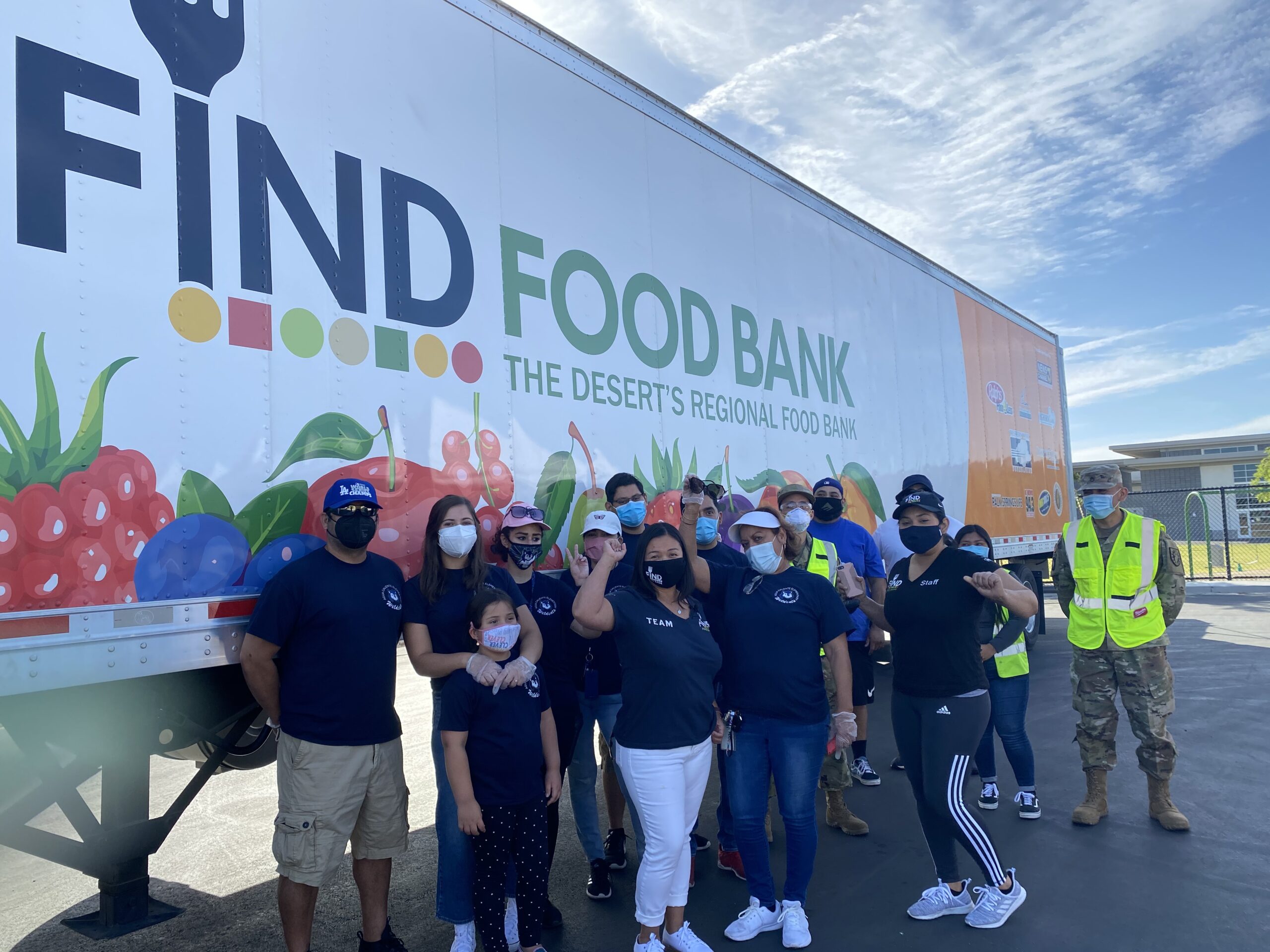Unprecedented was one of the most frequently and perhaps overused words of the COVID-19 pandemic, but it fits one more time in relation to charitable giving. There was an unprecedented global outpouring of generosity.
Global COVID-19 related philanthropy far exceeds funding tied to other recent crises, reported Ruyi Lu, corporate vice president of CCS Fundraising, an international strategic fundraising consulting firm, during a recent webinar they presented entitled “Reflecting on One Year of Pandemic Philanthropy.”
According to the Center for Disaster Philanthropy, from March 2020 to March 2021, more than $20 billion (valued in U.S. dollars) was donated worldwide for COVID-19 relief compared with disasters like Hurricane Harvey ($342.8M), the Australian brush fires ($152.4M) and other various hurricane relief efforts which were only in the millions. In terms of nonprofit sectors, human services received the largest share of funding, coming in at 28 percent; health organizations were a close second at 26 percent. As for the funding sources, corporations accounted for 44 percent, and 54 percent of the total awards were granted by community foundations. At least $5.8 billion was gifted by high-net-worth individuals and an additional $14.6 billion was donated by donor-advised funds.
According to a Fidelity Charitable survey conducted in summer 2020, nine out of 10 donors said they maintained or increased their giving in 2020 as a result of COVID-19 and its impact. As to what a representative sampling of nonprofits from various sectors actually experienced, CCS Fundraising conducted a poll survey of 1,038 nonprofit organizations in January 2021. Their Philanthropic Climate Survey found mixed results, with an overall 39 percent of respondents reporting an increase in fundraising due to COVID-19 and 44 percent reporting a decline. Looking ahead to 2021, 43 percent of those nonprofits said they expect a decline in fundraising, and 27 percent said they expect an increase.
However, according to the Fundraising Effectiveness Project, overall donations to U.S. nonprofits were up 10.6 percent from 2019 to 2020.
“Those nonprofits that made the decision to proceed with their campaign and fundraising activities and who were intentional about staying connected with their core supporters were rewarded in the long run. Those who hesitated, paused or lost touch had a harder time recovering efficiently and recovering some of that lost momentum,” said Lu.
The Zoom platform helped charities stay connected with their donor base and even connect with some new donors during the pandemic. Moving forward in a hybrid world, Charlie Michaud, principal and managing director of CCS Fundraising, said, “Zoom is here to stay. We’re hearing it from hundreds of charitable organizations and thousands of donors. In many ways, they like it. Board participation is up. Engagement of prospective new donors is up. It’s proving to be a very effective platform that will add to your in-person gatherings.” He also recommends that charities continue with Zoom briefings. “It’s a great way to communicate with prospects at all levels. Set up a calendar of monthly Zoom briefings. There is an audience that wants to connect with the leadership vision and mission of your organization, and they want to give.” As far as possible COVID fatigue, Michaud advises charities, “Don’t move on from COVID just yet.”
Michaud also noted many churches and other nonprofit organizations did not previously have a “donate now” button online. Adding this simple feature helped inspire online donations.
The January 2021 CCS Fundraising survey also found that 61 percent of nonprofits held an online fundraising event, and 56 percent requested a major gift virtually. And according to the
Blackbaud Institute’s 2020 Charitable Giving Report (published February 2021), online giving increased by 21 percent nationwide from 2019 to 2020.
Two Local Charity Examples
Coachella Valley Rescue Mission – A Brighter 2020 than Expected
The Coachella Valley Rescue Mission held its 49th anniversary gala on February 24, 2020, with an attendance of 400 people — just before the pandemic closures hit. That event netted $153,000 for the emergency shelter.
“We expected to take some financial losses after the pandemic hit, and we were preparing for the worst,” said Coachella Valley Rescue Mission Development Director Scot Wolf. “But I am happy to say that was not the case. In retrospect, we did a little better than 2019 due to crisis giving.”
While the mission experienced a slight increase in 2020, 2021 giving has declined. “After Christmas and year-end giving, we experienced a drop-off, and we are struggling a bit right now. It’s not the same as 2020. I think the crisis bubble has burst,” said Wolf. “We’re seeing the downside of the bell curve. We are hoping that it does pick up in the fall.” He also noted that some of the mission’s out-of-state donors did not return to the desert. “We depend on our fundraising from Labor Day to Easter to get us through the rest of the year. If we’re not having a good first part, we’ll struggle through the summer,” he said.
In addition to donations, the mission, like many nonprofits, relies heavily on the hundreds of hours of volunteer help. “Our volunteer program had to be eliminated down to zero during COVID,” said Wolf. “All the work the volunteers contribute to the mission had to be picked up by staff and clients. We are just now starting to bring back volunteers as they feel comfortable.”
And the mission’s need increased during COVID, yet COVID restrictions made it harder for the organization to serve the homeless. “We are continuing to see a rise in the emergency shelter population,” said Wolf. “During the pandemic, we were sleeping 40 to 60 people a night through 2020. Now it’s up to 80 people in the shelter. Our capacity is 150 (plus 14 in the family dorms), but we had to social distance the dorms. We are starting to add more beds back now.”
Amid the limitations and concerns of the pandemic, the mission was able to keep its clients on track. “In our programs, we graduated 73 clients on April 30,” said Wolf.
The Coachella Valley Rescue Mission also celebrated a major milestone this past March – their 50th anniversary. But given the Coachella Valley COVID-19 tier level, they opted for a “no-show” gala. While several charities held virtual events this past year, phantom events where people pay but don’t physically attend a gala have been a popular fundraising strategy for years. It was successful, netting $140,000, but it was not how the mission would have like to have celebrated this golden milestone. Ahead of the game for 2022, the organization is planning an in-person gala at the Hyatt in Indian Wells in March and has reserved a larger than usual space to allow for some spacing out.
To spur donations to meet the urgent summer need, the mission currently has a #MeetTheChallenge matching gift opportunity through May 31.
FIND Food Bank – Doubled Need and Record Giving During Pandemic
FIND Food Bank President and CEO Debbie Espinoza attributes the 2020 giving increase to the response to the increased need and education. Espinoza took the helm in 2018 and spent much of 2018 and 2019 educating the community about the mission and scope of the food bank as a regional food bank and as one of 200 Feeding America Food banks in the U.S.
“We were already growing in our fundraising, and it was getting stronger because people were starting to really understand the scope and scale of the food bank being the largest hunger-relief organization in the Coachella Valley desert region,” said Espinoza. The food bank’s geographic footprint doesn’t just include the nine Coachella Valley cities. It covers 5,000 square miles. “We go all the way to the border of Arizona, all the way up to the High Desert, all the way over to Anza and then down to the Western part of the Salton Sea and serve everything in between there,” Espinoza explained.
“What people started to realize is that we weren’t just a food pantry,” she said. “We are the food distribution hub of food for all of the food pantries in the greater Coachella Valley desert region. So, 75 to 100 percent of the food supply that’s provided to the community through the Coachella Valley Rescue Mission, the Galilee Center, LGBTQ Center, DAP Health and Martha’s Village & Kitchen – many people didn’t realize that we provide them with the majority of their food.” FOOD Find Bank donates to over 80 nonprofits which translates to over 100 distribution sites, along with its 44 community mobile market distributions and other food assistance programs.
“We had a strong base coming into the pandemic, and then more people joined in 2020,” said Espinoza. That was essential as the food bank’s need doubled in 2020. “We went from distributing about 10 million pounds of food in 2019 to over 23 million pounds in 2020,” said Espinoza. “We served 90,000 people every month in 2019. And in 2020, within eight weeks of the pandemic starting, we were hitting 190,000 every month. In 2021, our average hasn’t made it down. We’re still at about 150,000 people every month.”
FIND Food Bank also lost all its volunteers during the pandemic because of the shelter in place orders. “It takes over 5,000 volunteers to make this place tick,” she said. “The sheer amount of food we were moving, it took the National Guard to help us during COVID.”
“If you can imagine the value of 23 million pounds of food going out for free, and we can do that all on a $4 million annual budget. Our true operational budget when you consider the food value, because those are in-kind donations, is more like a $27 million organization,” said Espinoza.
With more than double the number of people needing food assistance, the community stepped up to the plate. The food bank’s largest fundraising event, their annual telethon, broke records in 2020, bringing in $515,000, nearly doubling the previous year’s donations of $280,000. With final calculations pending, the estimated amount raised during the 2021 telethon is over $350,000 – still well ahead of 2019.
What are FIND Food Bank’s greatest needs right now? They are as easy to remember as FIND – funds, friends (volunteers) and food donations.
Individuals Can Make a Difference
According to Giving USA 2020: The Annual Report on Philanthropy for the Year 2019, the most recent statistics available from The Giving Institute, the average daily giving in the United States is $1 billion a day to nonprofits, totaling $450 billion annually to philanthropy with $310 billion (69 percent) coming from individuals, 17 percent from foundations, 10 percent from bequests and 5 percent from corporations.
While not all nonprofit sectors fared as well with the recent shelter in place orders, it is clear that philanthropy is resilient in crisis, and individuals can make a big difference.




